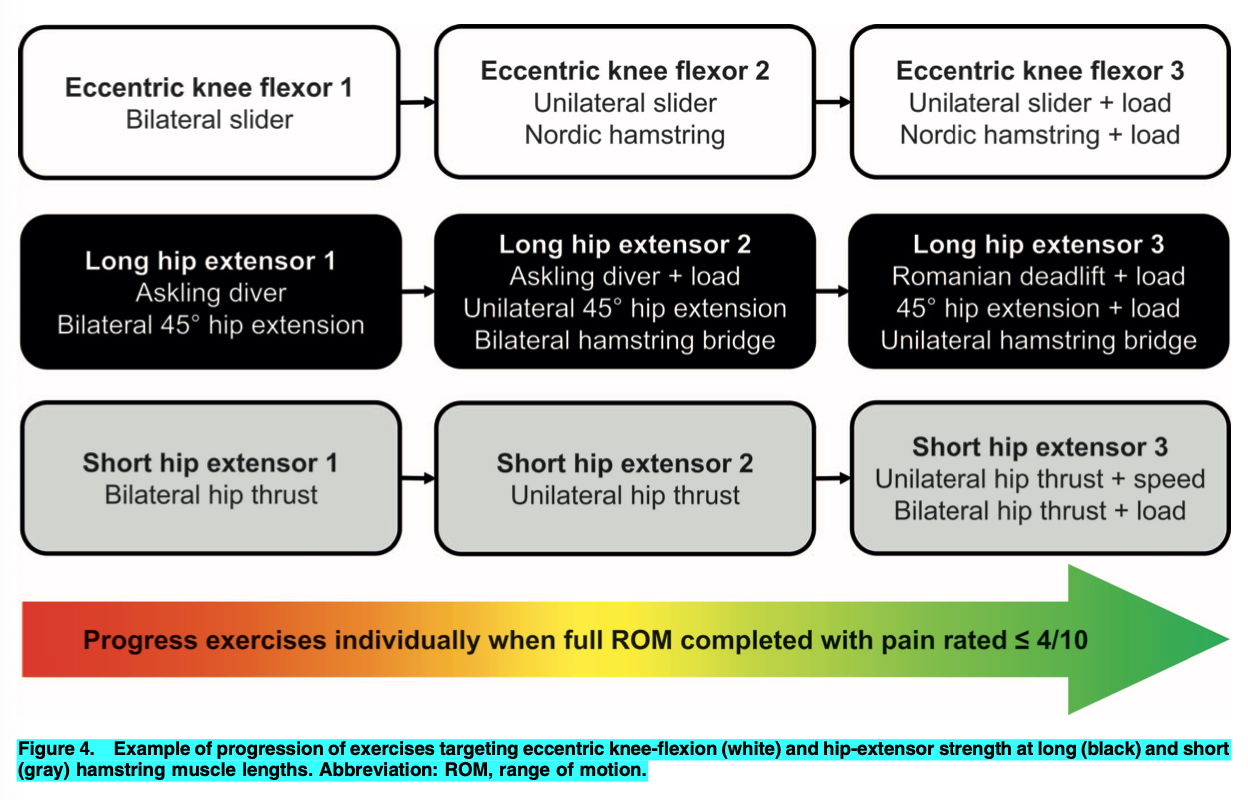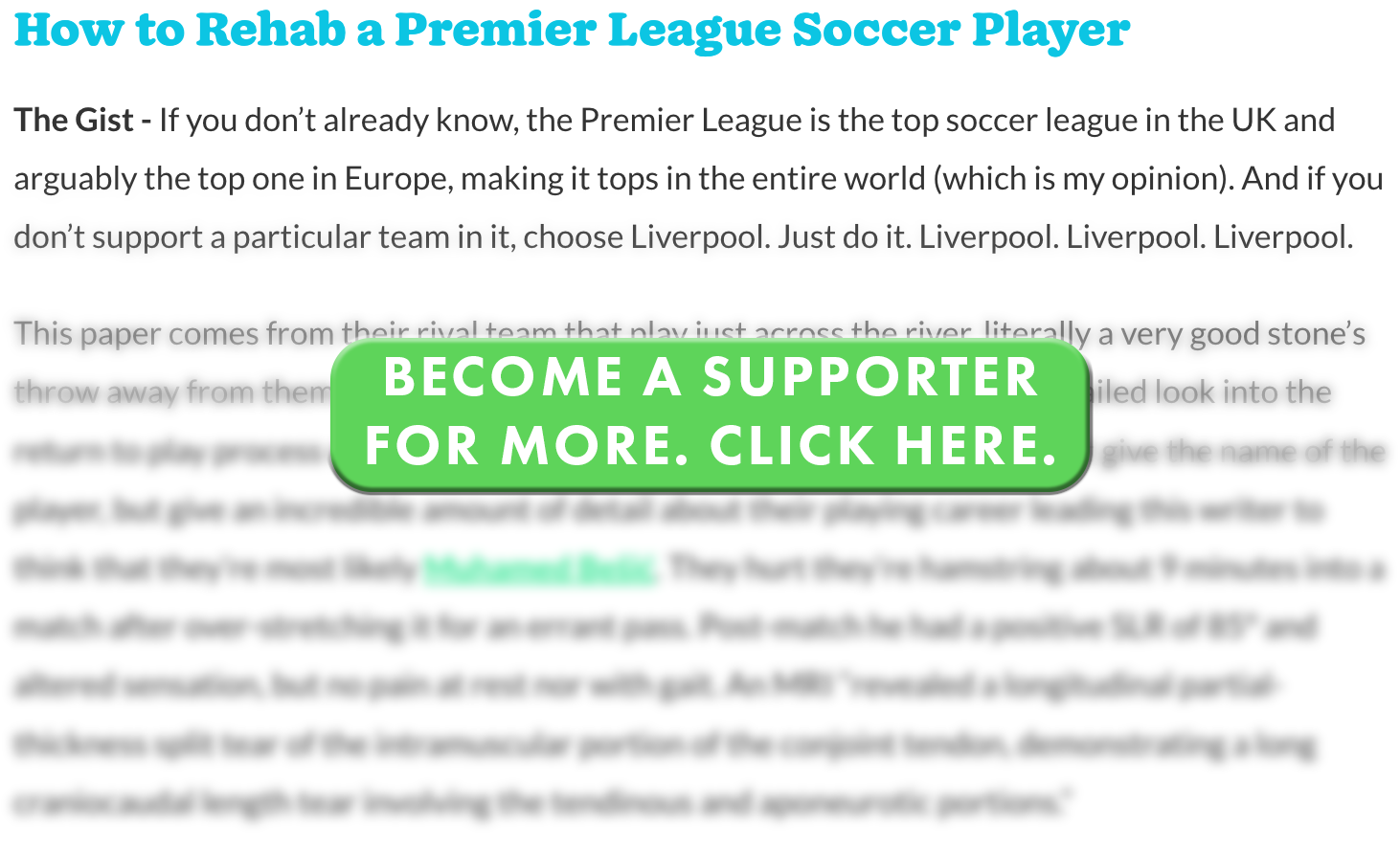🦀 PT Crab Issue 117 - Hamstring Tears and World Cups

In honor of the World Cup Final Final on Sunday (because technically this tournament is called the World Cup Final since the rest is World Cup Qualifying) and the 3rd place game on Saturday (featuring Morocco and Croatia), we’re talking hamstring strains and tears today. Because they’re all too common in soccer/football. One of the papers is even an amazingly in-depth case report on a player from the Premier League recovering from a hamstring tear. It’s one of the most complete protocol breakdowns I’ve ever seen. That’s for premium, King Crab supporters and you can become one for just $5 per month here.
For the rest of you (that’s you, btw) we’re looking at a piece from the Journal of Athletic Training on hamstring injury rehabilitation. And I’m also reminding you about the CPG on the topic that JOSPT put out earlier this year. You can find that and all other known CPGs here in this massive list you’ve helped me put together. My readers help me find new and updated ones via the form on that page. If you have more to contribute, please let me know!
With that, let’s dive in!
How to Heal a Hamstring
The Gist - This piece from the JAT (a fantastic journal, btw) presents a straightforward approach to hamstring injury rehab while breaking down some complexity too. They point out that “In the second half of the swing, the hamstring are active, rapidly lengthening, and absorbing energy to decelerate the limb in preparation for foot contact” and that “Hamstring muscle force increases approximately 1.3-fold as running velocity increases from 80% to 100% of maximum and the greatest muscle-tendon unit stretch is incurred by the long head of the biceps femoris.” As folks who know about muscles, you know that it’s dangerous to put out more and more force as a muscle reaches its maximal length. No wonder so many people strain hamstrings.
For diagnosis, they cite research that points out that previous hamstring injury “increases the risk of future… by 2.7 times”. Usually palpation, ROM, and strength testing combine to diagnose the injury. Maximal pain provocation lets one zoom in on the exact location and ROM can provide good indication of tear severity. Lastly, pain rating during isometric contraction and strength of contraction indicate severity as well. In the soccer player paper for King Crab supporters, they use a scale on a box to test strength. The player puts their leg in 90-90 position then pushes down on the scale, forcefully extending their hip and flexing their knee and the maximum value the scale reads indicates current strength. Pretty simple and cool!
Lastly on dx, MRIs haven’t been shown to be too helpful in guiding rehab. In fact, diagnostic ultrasound could be even better, but we don’t have data that shows either as too helpful.
Tell Me More - Now for the rehab. They recommend a 3 stage process for return to running, starting when the person can walk with pain less than 4 on a 0-10 scale. This is gradual progression from slow jogging to moderate running. Then slow progression into faster and faster running with great care taken with exposure to sprinting, only increasing speed 5% at a time as you approach maximal running velocity. For the exercises that help that rehab, they recommend eccentric loading even early in the process. As soon as someone can get through full ROM with pain <4/10, they recommend a combination of eccentric knee flexion, long hip extension, and short hip extension exercises. I included a figure to better define what they’re talking about.

They also have a series of videos showing the specific exercises recommended. Here are links to those:
- Submaximal slider exercises: http://doi.org/10.4085/1062-6050-0707.20.S1
- Hip extensor exercises: http://doi.org/10.4085/1062-6050-0707.20.S2
- Hip thrusts: http://doi.org/10.4085/1062-6050-0707.20.S3
They also recommend progressive agility and trunk exercises that can help control lumbopelvic position and reduce hamstring length in running. Alongside all that, there recommend hamstring flexibility exercises “if deficits persist during rehabilitation, as greater deficits in active knee-extension ROM at RTS have been associated with an increased risk of subsequent hamstring injury” and data shows that “Recovery of active knee-extension ROM can be slightly accelerated by implementing passive hamstring stretching 4 times per day, compared with once daily, starting at 48 hours after hamstring injury.”
Lastly, there’s limited evidence that running technique drills and manual therapy are helpful in most people, jsyk.
I’m out of space except to say that they recommend the Askling H-test to test for pain and apprehension and eccentric strength testing to prep for return to sport.
There’s a lot more in the paper, but I think you’ll agree that’s a lot already. If you want more, read it!
Paper? Here it is.

And that’s our week! Thanks again for subscribing and do share with friends and colleagues if you can. It really helps. Bye!
